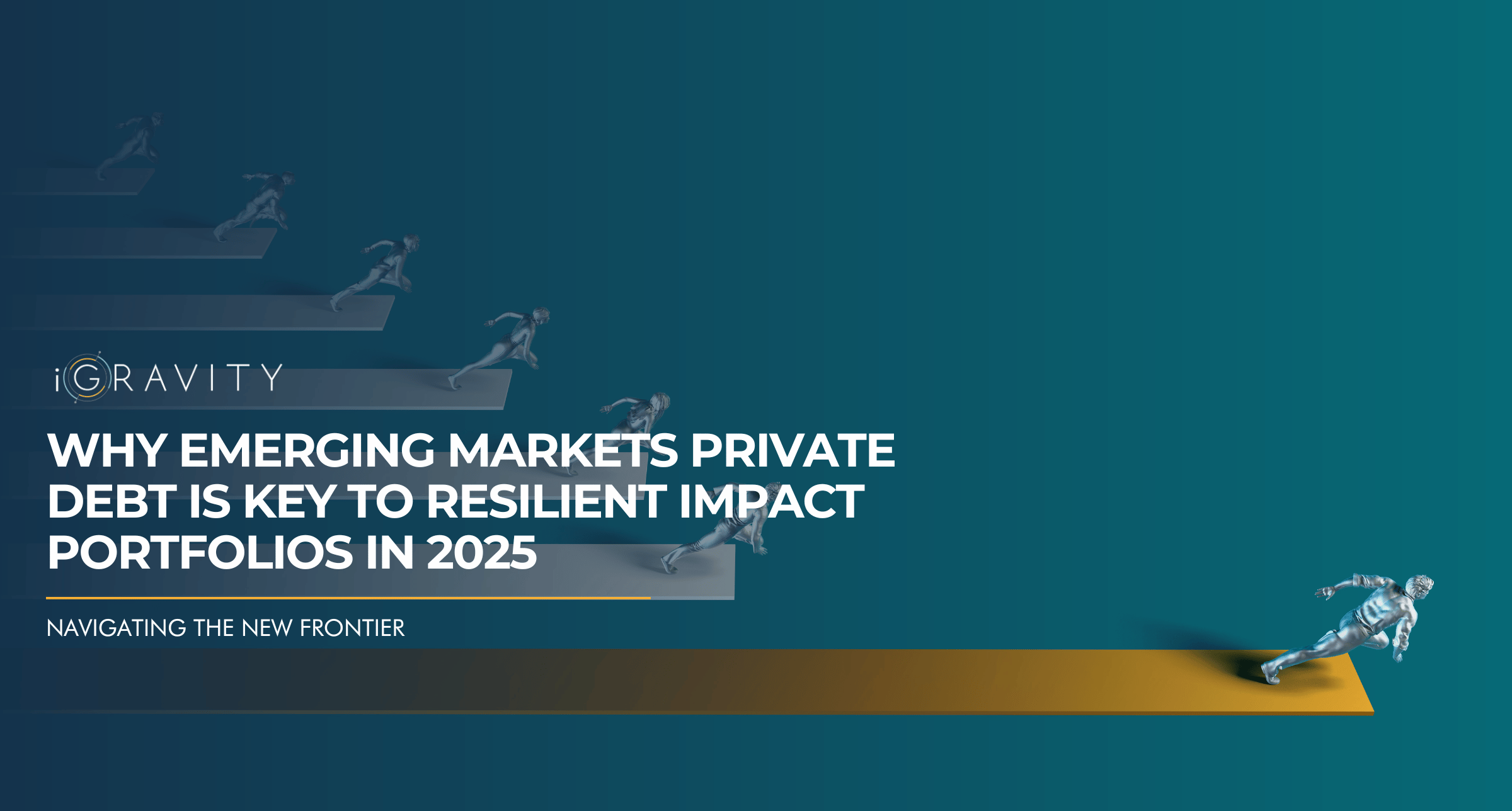Navigating the New Frontier: Why Emerging Markets Private Debt Is Key to Resilient Impact Portfolios in 2025

The year 2024 served as a powerful reminder: the global financial landscape is in constant motion, and what defined “resilience” yesterday may not be enough for tomorrow. Economic shifts, geopolitical complexities, and evolving policy landscapes have created a new reality for investors. At iGravity, these dynamics have driven us to deeply rethink and restrategize our own investment approaches, leading us to a clear conviction: Emerging Markets Private Debt is not just an opportunity, but a strategic imperative for building truly resilient and impactful portfolios.
The Ascendance of Private Debt: A Strategic Asset Class
Investor demand for private debt continues to rise. According to Schroders’ 2025 Global Investor Insights Survey, 45% of institutional investors rank private debt and credit alternatives as their top choice for income generation. Meanwhile, UBS’s Family Office Report 2025 shows that average family office allocations to private debt have doubled to 4% in 2024, with plans for further increases.
This growth is not accidental. Private debt has consistently outperformed its public market peers over the last ten years, with private debt deals outpacing broadly syndicated loans by approximately 157 basis points
Within the broader impact investing landscape, private debt has emerged as a significant and compelling asset class. The Global Impact Investing Network (GIIN) reports that the overall impact investing market has surged to over $1.571 trillion in assets under management (AUM) globally, with private debt accounting for approximately 20–25% of total impact AUM.
In emerging markets specifically, private debt has gained substantial traction, supporting a 35% increase in SME financing and a 40% increase in infrastructure project funding over the past five years. This robust growth is underpinned by the ability of private debt to address unmet financing needs for local enterprises and critical infrastructure, offering flexible capital solutions that traditional banks often cannot provide.
Why Emerging Markets? Expanding the Diversification Frontier
The interconnectedness of global markets has become undeniable, with systemic shocks now rippling across asset classes and geographies. This reality is prompting investors to rethink what true portfolio resilience looks like. As the IMF noted in last year’s Global Financial Stability Report, average cross-asset correlations remain elevated, reducing the traditional buffer against market swings.
This challenge is most acute during downturns, when correlations spike and conventional diversification strategies lose effectiveness. However, investors can meaningfully cushion portfolios against volatility by combining low-duration assets with Emerging Markets Private Debt, which typically offers limited mark-to-market exposure and is often driven by local, less correlated growth dynamics.
In fact, history shows that many emerging markets move independently of developed markets, supported by unique economic cycles and powerful demographic trends. World Bank data from 1961 to 2024 show North America’s GDP growth has a relatively high correlation of 0.64 with the Euro Area, but only 0.13 with Sub-Saharan Africa and just 0.03 with South Asia.
Past success stories like China and India show how rapid population growth and domestic demand can create massive investment opportunities that traditional markets simply can’t replicate. Today, emerging markets remain the next frontier, offering growth engines that investors wouldn’t want to miss and the potential to strengthen portfolios against global volatility.
iGravity’s Strategic Response: The Emerging Impact Debt (EID) Strategy
At iGravity, our commitment to both financial resilience and measurable impact has led to a deliberate strategic evolution. We have refined our approach, culminating in our refined Emerging Impact Debt (EID) Strategy designed to concentrate exclusively on emerging markets private debt.
This strategic approach includes investments in private debt funds, structured notes, and listed bonds that directly fuel sustainable economic growth, job creation, inclusion, and climate-positive outcomes on the ground. This strategic shift allows us to build a more focused, impactful, and resilient investment framework.
While emerging markets offer compelling opportunities, we understand the importance of robust risk management. iGravity’s EID Strategy is built with this in mind, incorporating innovative risk mitigants to enhance resilience and attract capital. Our investment solutions often feature built-in risk protection mechanisms, such as first-loss guarantees or subordinated structures backed by public or philanthropic capital. These are designed to absorb initial losses, thereby de-risking the senior tranches of investments and making them more attractive to private investors. This thoughtful structuring is key to mobilizing significant capital into impactful ventures that might otherwise be deemed too risky.
Conclusion: Investing for a Resilient Future
The imperative for resilient portfolios has never been clearer. Emerging Markets Private Debt offers a compelling pathway to achieve both robust financial returns and profound, measurable impact. By investing in private markets and favoring lower duration assets, investors can further reduce exposure to market swings and volatility. At iGravity, our refined Emerging Impact Debt (EID) Strategy embodies this opportunity, supporting change while preserving returns.
📥 For a deeper exploration, see our 2024 Investment Solutions:
Financial & Impact Performance Report: 👉 https://publuu.com/flip-book/887205/1944944
For information only: The information contained in this marketing material is provided for informational purposes only and does not constitute an offer, solicitation or a recommendation to buy or sell any security or financial instrument, financial product or services.

